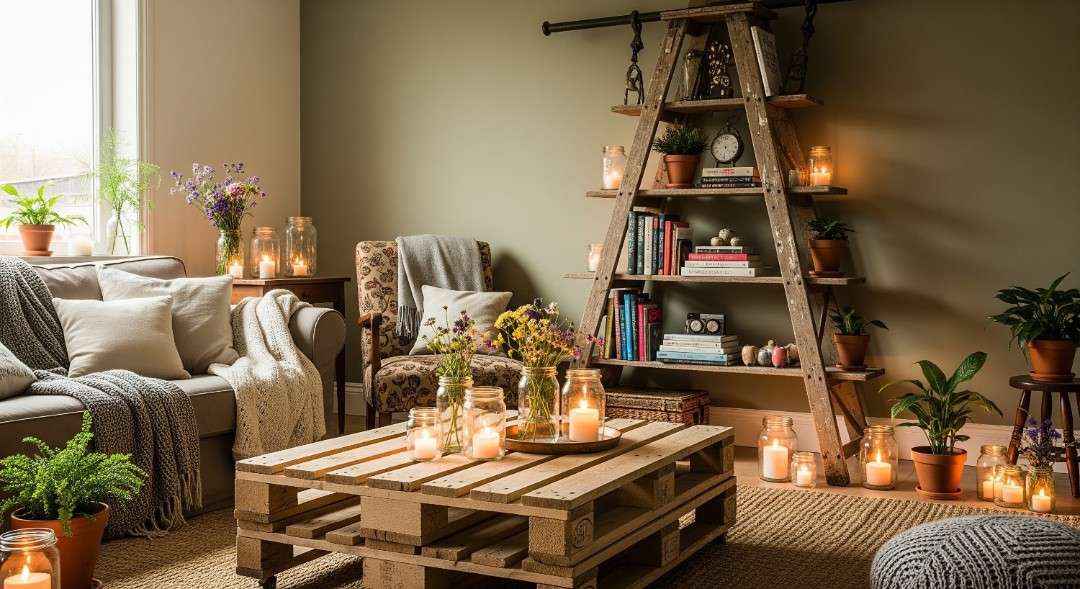In a world increasingly focused on sustainability, repurposing everyday objects helps reduce waste while sparking creativity. With a bit of ingenuity, items once considered useless can become functional, decorative, or even profitable. From transforming outdated furniture to finding surprising uses for discarded materials, repurposing breathes new life into forgotten possessions.
This not only saves resources but also offers unique, personalized solutions that stand out from mass-produced alternatives. The following ideas show how seemingly obsolete items can serve a valuable role once again, blending practicality with eco-conscious living.
1. Mason Jars
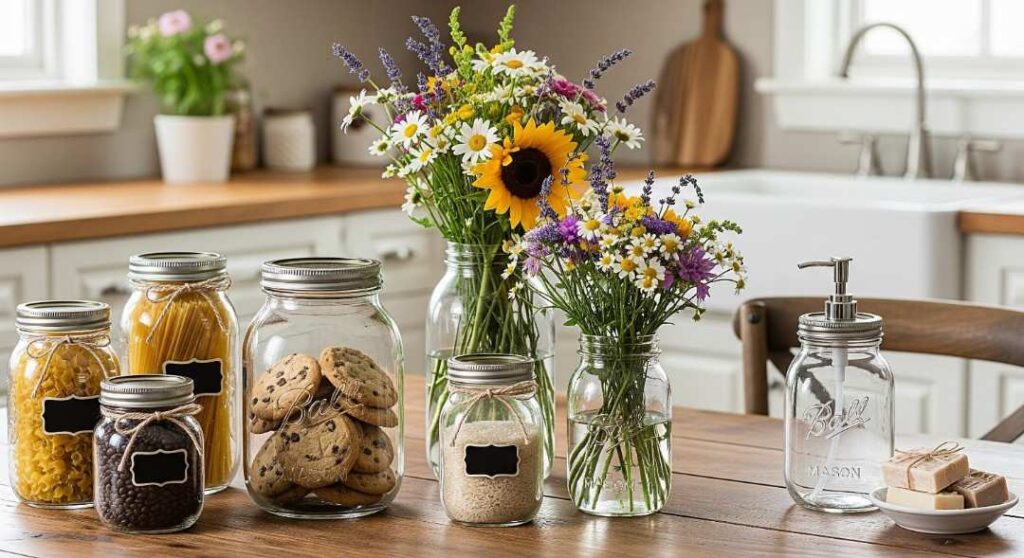
Mason jars can be transformed into versatile storage solutions for pantry staples, craft supplies, or even bathroom essentials. Their airtight seals help preserve dry goods, while their transparent design makes contents easy to spot. Adding labels and decorative lids can elevate their aesthetic appeal.
For events, they double as drinkware or centerpiece vases. Unlike plastic containers, glass jars don’t absorb odors and are dishwasher-safe, making them long-lasting. With a little creativity, they can also become solar lanterns or soap dispensers. Some even repurpose them for layered salad lunches, overnight oats, or home fermentation projects (source).
2. Wooden Pallets
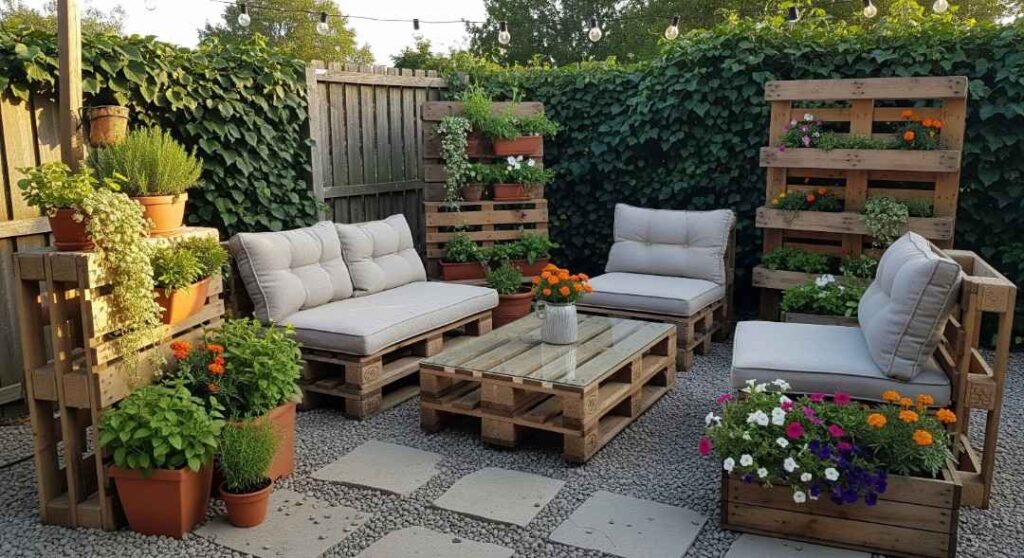
Discarded wooden pallets can be repurposed into furniture, garden planters, or even vertical storage racks. Their sturdy structure supports heavy loads, making them ideal for coffee tables or shelving units. Sanding and sealing the wood ensures durability and safety, especially for indoor use.
You can paint or stain pallets to match any décor. In gardens, they create efficient vertical planting systems, maximizing space in small areas. With basic tools, you can reshape these pallets into countless functional designs, offering an affordable alternative to store-bought furniture. Some creative builds include outdoor bars, compost bins, and even bed frames (source).
3. Old T-Shirts

Old T-shirts can be turned into reusable grocery bags, reducing reliance on single-use plastics. With minimal sewing, fabric strips become sturdy straps, and the body of the shirt transforms into a bag capable of holding heavy items. Cut them into cleaning rags to eliminate the need for paper towels.
For pet owners, braided T-shirt yarn makes durable chew toys. Creative crafters use them for quilts or wall art. Cotton’s absorbency and softness make it perfect for multiple uses, ensuring old clothing avoids landfills. They’re also great for making headbands, dust covers, or cushion covers (source).
4. Wine Corks
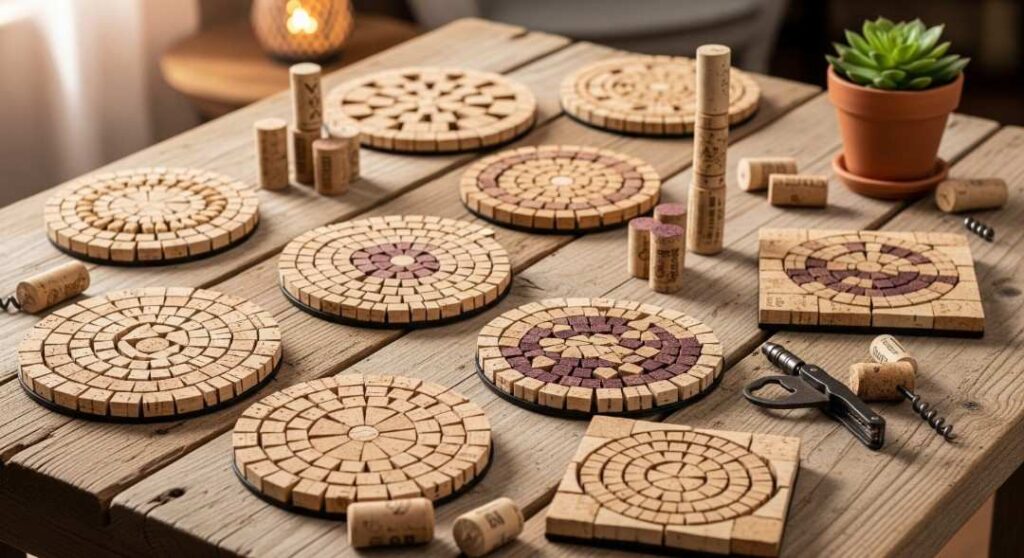
Wine corks, whether natural or synthetic, have surprising potential for repurposing. They can be sliced and glued into trivets or coasters, offering heat resistance and rustic charm. Cork boards for pinning notes are another popular option, and smaller cork pieces can fill plant pots to improve drainage.
For more artistic uses, corks can be carved into stamps or arranged into wall art. Their lightweight and water-resistant properties make them practical for various crafts, extending their life beyond a single bottle opening. Some also use them in fishing bobbers or as keychain floats for water activities (source).
5. Glass Bottles
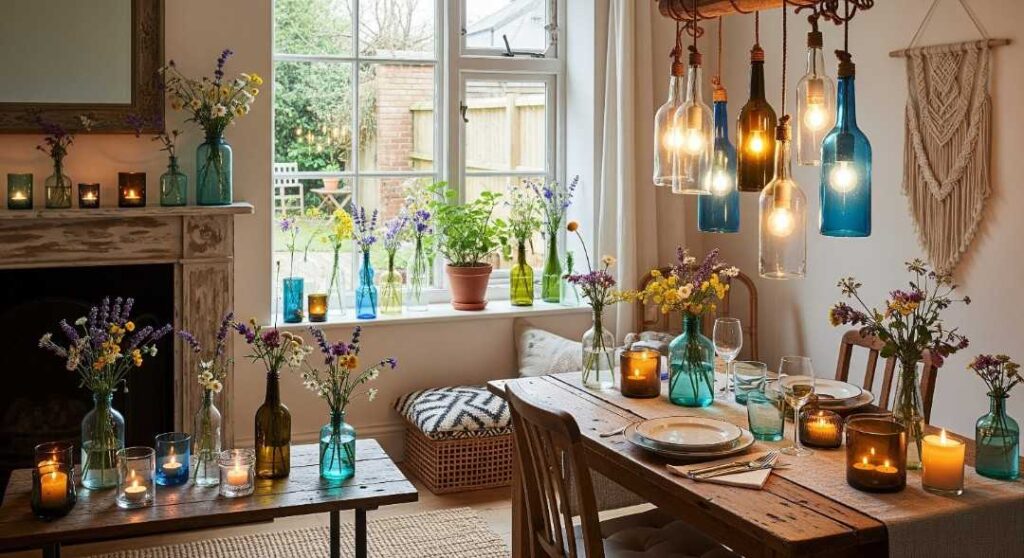
Glass bottles can be cleaned, cut, and repurposed into vases, candle holders, or even pendant lights. Colored glass adds aesthetic appeal without the need for paint. Bottles with unique shapes become decorative storage containers for oils, vinegar, or homemade syrups.
Gardeners can use inverted bottles for slow-release watering systems in potted plants. Since glass is infinitely recyclable, repurposing offers an eco-friendly alternative to disposal while adding charm to home décor projects. Many DIY enthusiasts also turn them into wind chimes, garden borders, or self-watering planters (source).
6. Shoe Boxes

Shoe boxes make excellent organizers for paperwork, cables, or small household items. Covering them with decorative paper or fabric enhances their appearance, allowing them to blend into home décor. They can be stacked and labeled for efficient storage in closets or offices.
For children, they transform into creative diorama projects or toy storage. Their sturdy cardboard construction makes them reusable for years if handled carefully, reducing the need for plastic bins. Some even use them to store seasonal decorations, photos, or sewing supplies in a neat and compact way (source).
7. Old Ladders
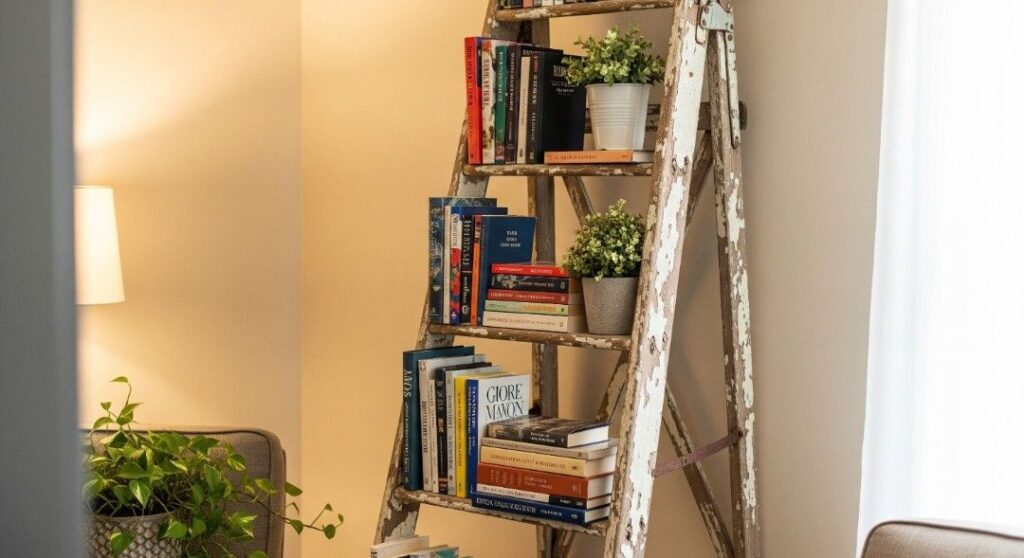
Old wooden ladders can become rustic bookshelves, towel racks, or plant stands. Their tiered design offers vertical storage without taking up much floor space. Sanding and sealing prevents splinters and prolongs the wood’s life. In kitchens, they can be hung horizontally as pot racks.
Outdoors, ladders make charming trellises for climbing plants. Their vintage appeal often enhances the aesthetics of a room, providing both function and decoration. Some upcyclers even use them as display racks for quilts, magazines, or hanging lights in event spaces (source).
8. Tin Cans
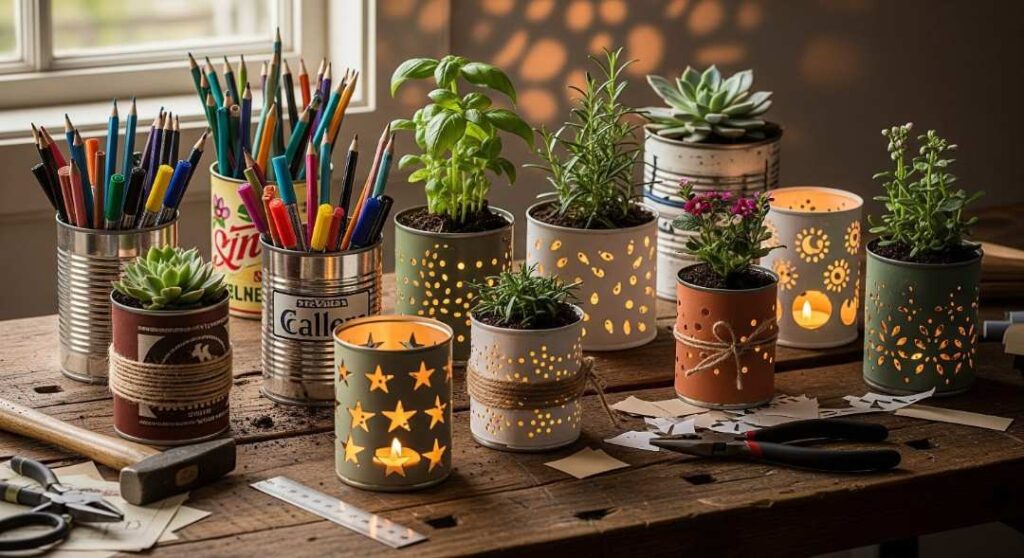
Tin cans, once cleaned and de-burred, can become pencil holders, utensil containers, or small planters. Wrapping them in twine or painting them gives a personalized touch. For outdoor use, they make sturdy luminaries by punching decorative holes and inserting candles or LED lights.
In workshops, they serve as hardware storage. Metal’s durability and recyclability make cans a sustainable choice for long-term use, reducing waste from single-use packaging. They’re also perfect for organizing art brushes, knitting needles, or as bird feeders with minor modifications (source).
9. Picture Frames
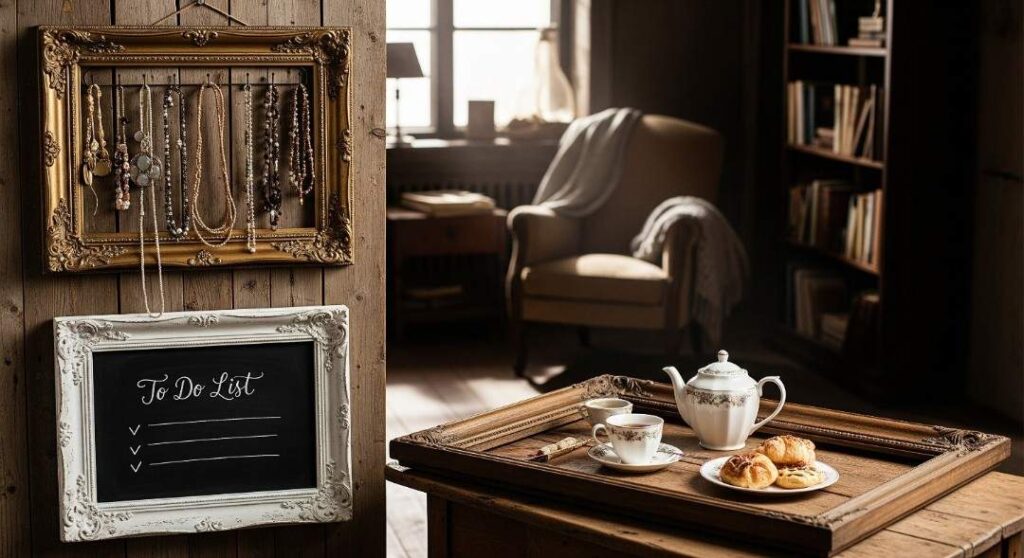
Repurpose old picture frames into serving trays, chalkboards, or jewelry organizers. Removing the glass and adding fabric or mesh creates functional storage for earrings and necklaces. Larger frames become stylish bulletin boards for home offices. Painted or refinished frames give outdated décor new life at a fraction of the cost.
Their sturdy construction makes them versatile bases for multiple DIY projects. Some people also use them to display pressed flowers, create seasonal wreaths, or frame inspirational quotes for decorative wall accents (source).
10. Plastic Containers
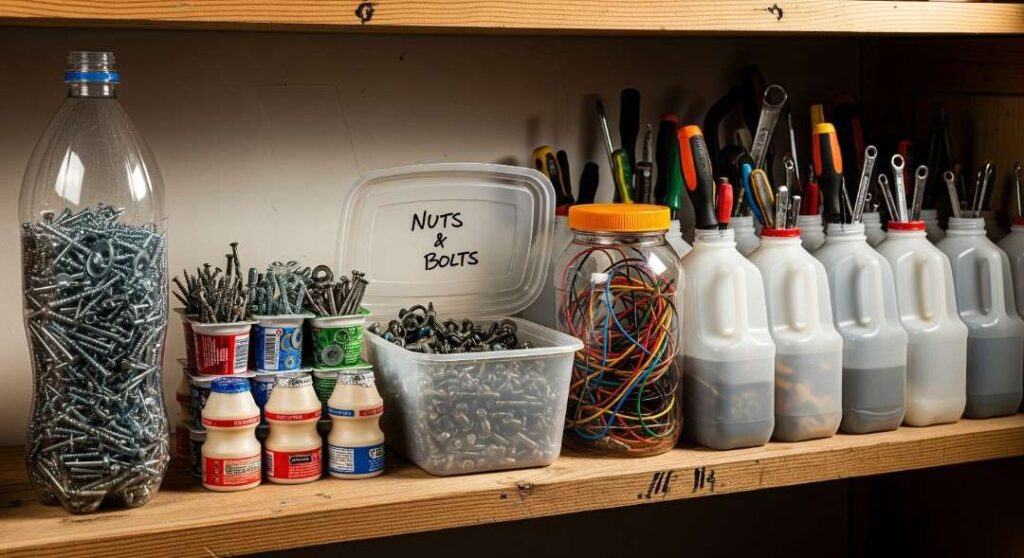
Plastic food containers can be reused for organizing tools, hardware, or art supplies. Clear containers make contents visible, saving time when searching for items. They’re also ideal for seed starting in gardening. With proper cleaning, some can store non-food household products like detergents or cleaning solutions.
Reusing plastic extends its lifespan, reducing the volume of non-biodegradable waste sent to landfills and oceans. They can also be used for DIY first-aid kits, travel snack boxes, or compartment storage for sewing and craft materials (source).
11. Broken Tiles
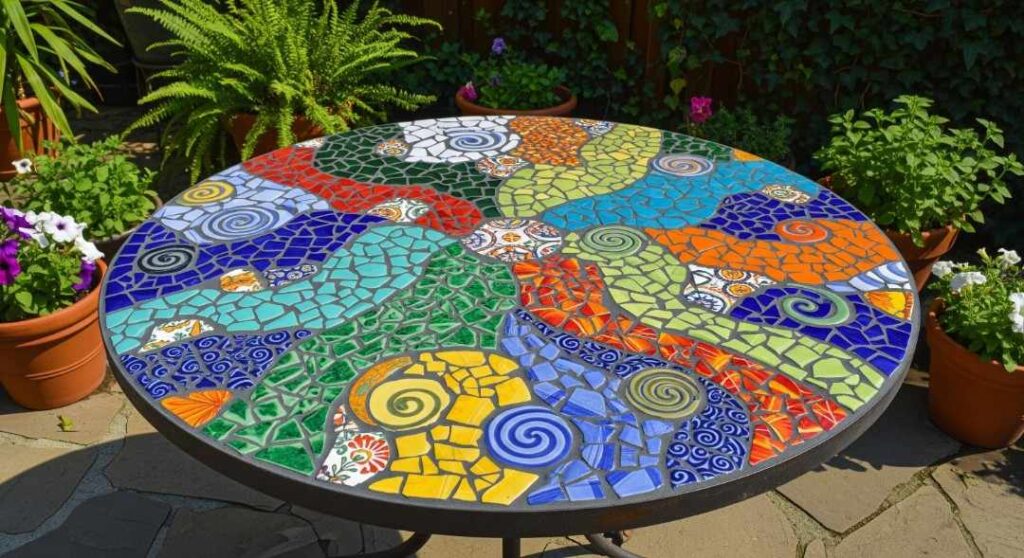
Broken ceramic or porcelain tiles can be turned into colorful mosaics for garden paths, tabletops, or decorative wall art. Arrange the pieces in geometric patterns or artistic designs, and seal them with grout for durability. They also work well as coasters or trivets when mounted on cork or wood.
This repurposing method saves money on new materials while adding unique, custom flair to any project. Some artists even use tile shards for mirror borders, plant pot decoration, or outdoor stepping stone designs (source).
12. Old Books
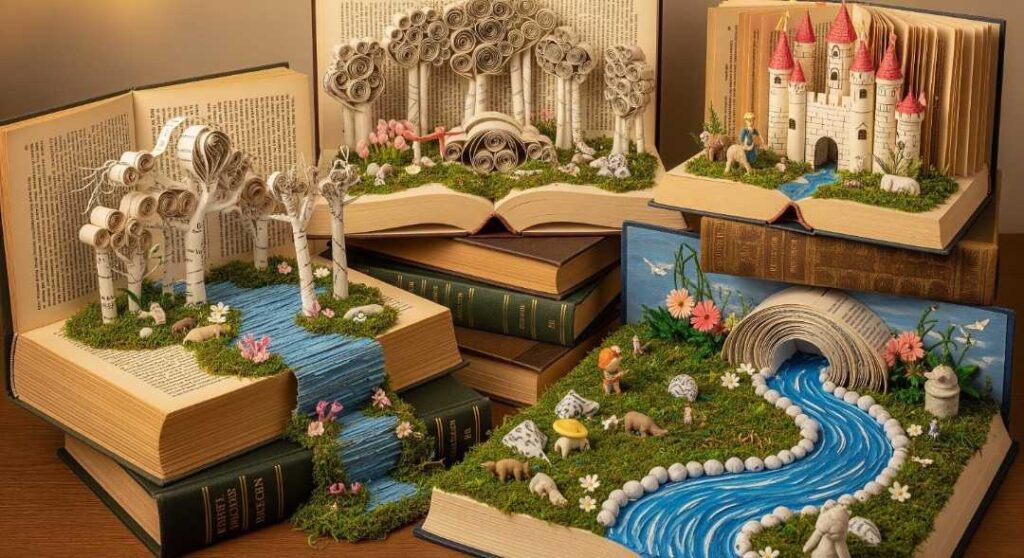
Outdated or damaged books can be transformed into storage boxes by hollowing out pages. They also serve as bases for art journals, scrapbooks, or paper sculptures. Stacked and sealed, books can become side tables or decorative displays.
Their covers and pages add vintage charm to craft projects, while recycling the remainder reduces paper waste. Creative upcyclers also turn them into wall shelves, lamp bases, or plant stands, giving them both functional and aesthetic appeal in modern interiors (source).
13. CD Cases
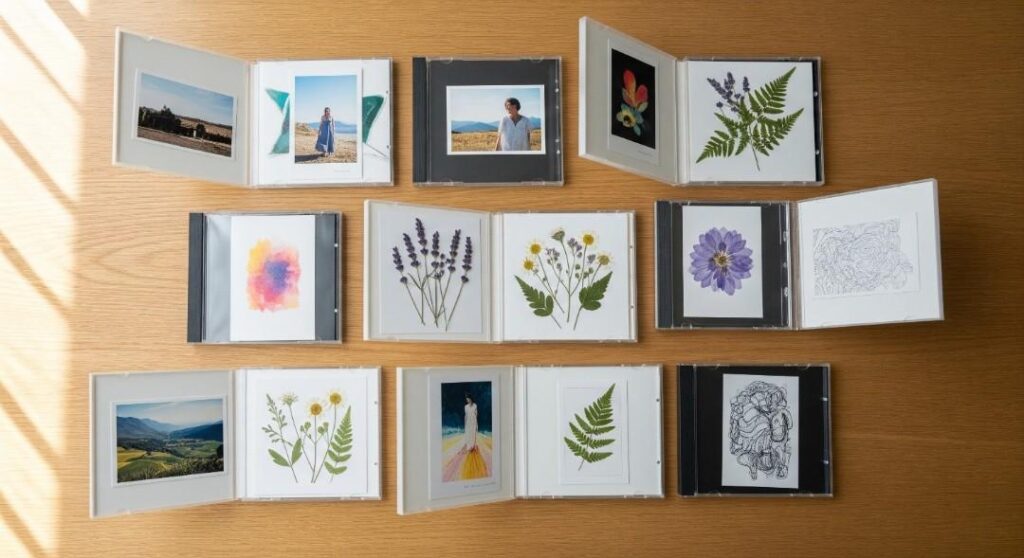
Empty CD cases can hold photographs, pressed flowers, or small art prints. They also serve as makeshift mini-greenhouses for seedlings. With a few modifications, they can organize sewing needles or small hardware.
Clear plastic cases provide protection from dust and damage, making them suitable for archival storage. They can also be transformed into wall art displays, portable watercolor palettes, or custom recipe card holders for the kitchen, extending their usefulness far beyond music storage (source).
14. Fabric Scraps
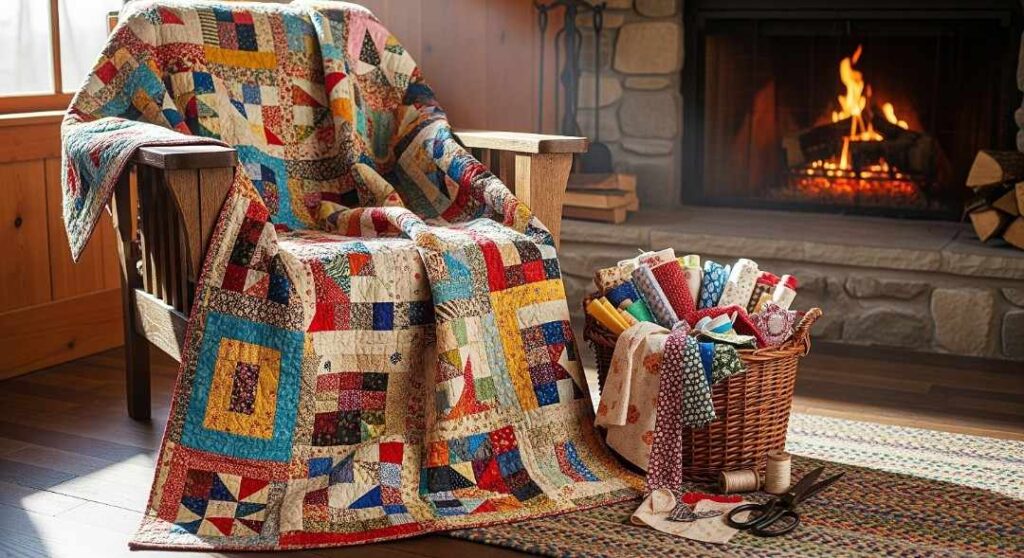
Leftover fabric scraps can be sewn into patchwork quilts, cushion covers, or reusable produce bags. Smaller pieces make appliqués or embellishments for clothing. Even tiny scraps serve as stuffing for pillows or pet beds.
This reduces textile waste and promotes sustainable crafting, especially when combined with natural fibers. Quilters and crafters often keep scrap bins organized by color, turning discarded material into vibrant works of art or seasonal decorations like bunting and gift wrap ribbons (source).
15. Old Cutlery

Mismatched or bent cutlery can be reshaped into hooks, handles, or garden markers. Flattened spoons and forks make unique drawer pulls, while knives can be used in craft projects when dulled for safety.
Their sturdy metal construction ensures longevity, giving them functional use long after mealtime. Some artisans turn them into wind chimes, wall art, or curtain tiebacks, blending utility with decorative flair in both indoor and outdoor spaces (source).
16. Bed Sheets
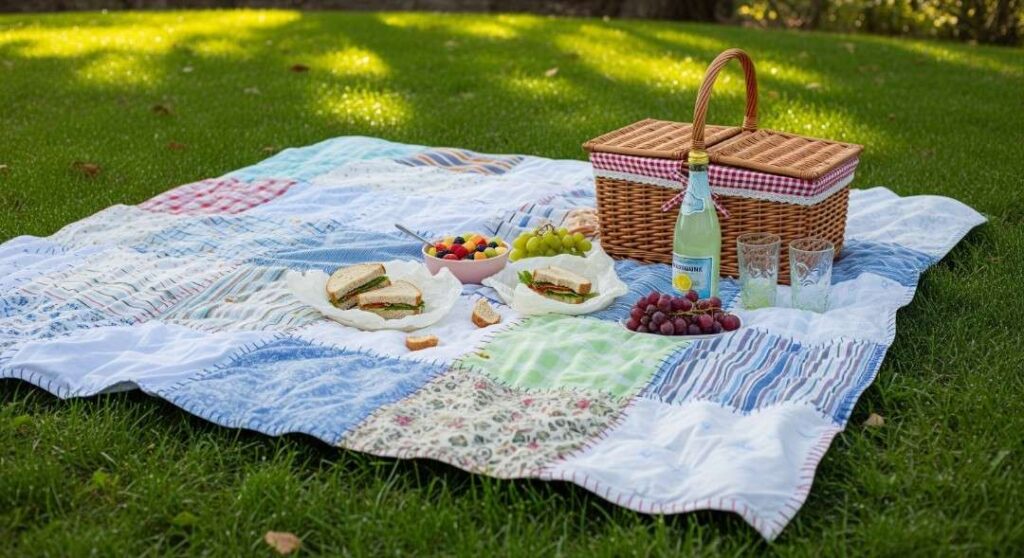
Worn bed sheets can be cut into curtains, tablecloths, or reusable cleaning cloths. They also serve as protective covers for furniture during painting projects. Larger sheets work well for picnic blankets or drop cloths.
Cotton and linen varieties are breathable and washable, making them versatile household materials. Some people dye or paint old sheets for custom backdrops, sewing projects, or even makeshift hammock slings for casual outdoor relaxation (source).
17. Egg Cartons
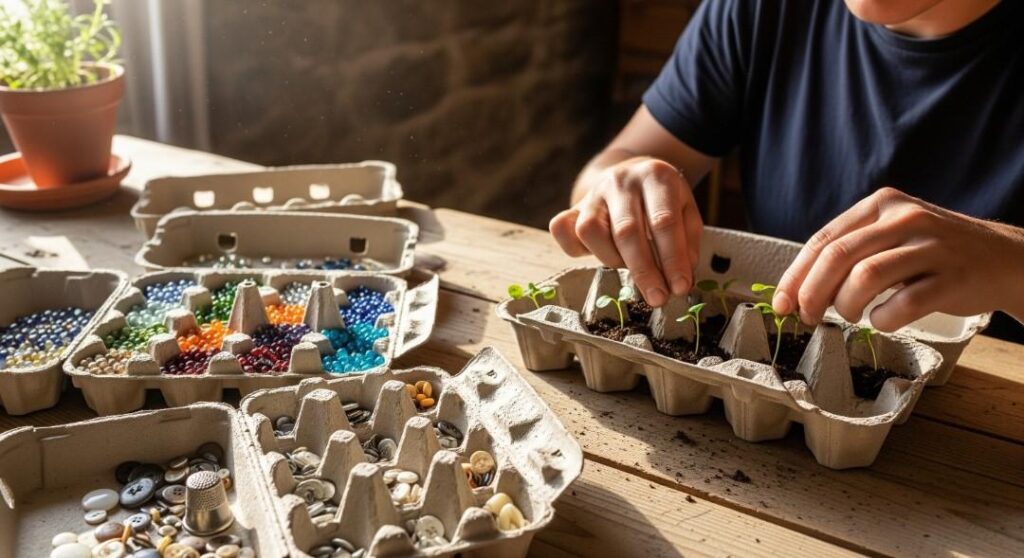
Egg cartons are perfect for starting seeds indoors, with each compartment acting as a biodegradable pot. They also organize small items like beads, buttons, or screws. Cardboard cartons break down naturally in compost, while foam versions can be repurposed for craft storage.
Some educators use them in classrooms for sorting games, art projects, or counting exercises, extending their life before eventual disposal or recycling (source).
18. Glass Jars with Lids
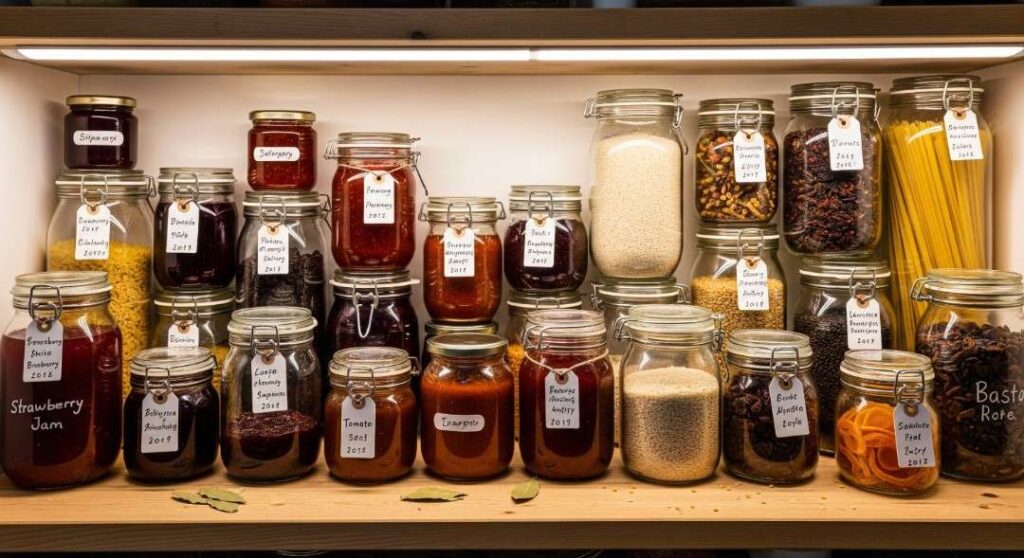
Glass jars with lids store homemade jams, sauces, or bulk pantry goods. They also work as airtight containers for craft supplies or small hardware. For decorative purposes, they become terrariums or sand art displays.
Their transparency and resealable nature make them superior to opaque containers for organization. Many people also use them for homemade candles, salad dressings, or DIY spice blends, adding both function and charm to kitchen organization (source).
19. Bicycle Wheels
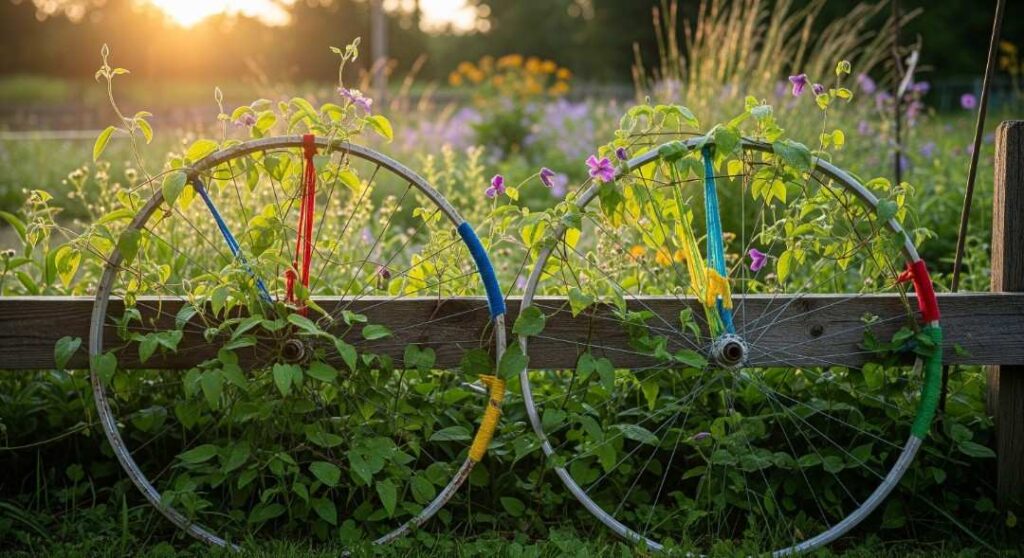
Old bicycle wheels can become unique wall décor, pot racks, or even clocks. In gardens, they serve as trellises for climbing plants. Their circular frame and spokes provide both structure and visual interest, making them an ideal base for creative projects.
Artists sometimes weave colorful yarn between the spokes or attach photos to create interactive displays. They can also be used in kinetic sculptures or outdoor art installations (source).
20. Suitcases
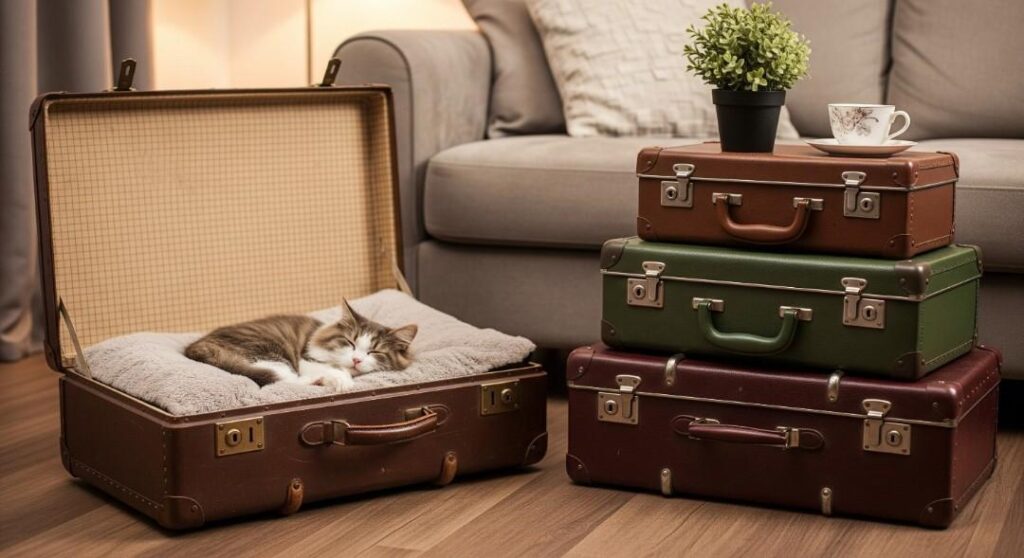
Vintage suitcases can be turned into stylish storage units, pet beds, or side tables. Their sturdy frames and built-in handles make them portable and durable. With added cushioning, they provide cozy resting spots for pets.
Lined and cleaned, they’re excellent for organizing seasonal clothing or keepsakes, blending practicality with nostalgic charm. Creative decorators also stack them to make tiered storage systems, nightstands, or portable picnic kits for outdoor adventures (source).

